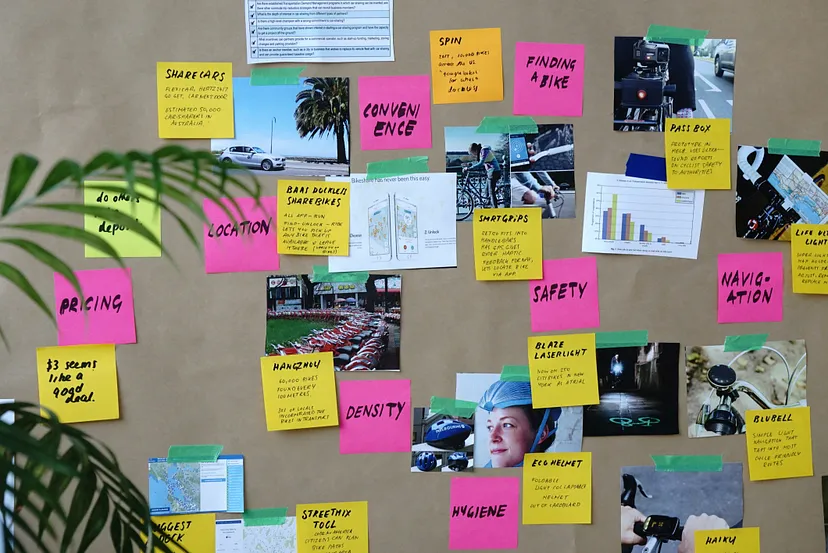When I first started my PhD three years ago, I was very new to the world of academia and the process of publishing in journals and conferences. Coming from Computer Engineering, my PhD involved design research, and I felt that the publishing process for human-computer interaction, design, design engineering, design research, and other related spaces was more ambiguous than computer science or other purely STEM subjects.
While I didn’t know much yet, one thing that became instantly clear was that many people associated publishing with success as a researcher. Publishing seemed important, even critical, not only for the PhD but for my career as an academic or researcher (even for some places in industry).
Now, three years later and with seven first-author publications under my belt, I’m here to share everything I wish I had known during that first year.

What even is publishing?
I’m referring to publishing as having a paper accepted at a journal or conference. This typically involves a peer-review process, which means that two or more reviewers read and approve your paper. These reviewers are usually ‘experts’ on the topic you’ve written the paper on, which could mean they’re academics, researchers, industry experts, etc. This process is usually blind, meaning that your name and institution are hidden from reviewers to avoid any biases.
A paper can only be submitted to one venue at a time and can only be resubmitted to a second place if rejected or withdrawn from the first place. Sometimes a journal paper describing a study can be repurposed as a conference paper, and vice versa. That’s only if there’s a significantly different angle or extension presented for the same study/data, but otherwise, it’s usually one study = one paper.
What can I publish?
Typically, in the spaces of human-computer interaction and design research, papers will be one of two types:
- A Review Paper: This is usually a systematic literature review where you’re just analyzing the literature that already exists on a topic. This involves being systematic (i.e., following a known process such as PRISMA to make sure you’ve collected all the papers that exist on a topic) and doing some analysis (i.e., not just saying ‘these are the papers that exist’, but also looking for trends or patterns that can be learned from looking at the combination of these papers as a whole).
You can see an example here where I look at all the papers that have collaboratively designed conversational AI with different stakeholders. Not only do I collect and present the papers, but I also analyze different factors like which stakeholders were involved and which collaborative design activities they used.
This type of paper is usually only accepted in journals and is less likely to be accepted at conferences, which tend to focus more on the second type below.

- An Empirical Paper: This is a paper where you’ve done new research and you’re presenting it. In the fields I mentioned this will normally involve human participants and include methods like surveys, interviews, workshops, ethnography, and so on. You’ll give the introduction and a short literature review to give background and context to your study, then you’ll summarise the methods you used and present your results before discussing them.
An example of this kind of paper is this one. I interview professionals who build conversational AI to understand their experiences and struggles and then summarise and analyze those in relation to similar papers that have also interviewed other AI professionals. For more quantitative work, you can check out my guide for doing statistical analysis on design research.
This type of paper is normally accepted at both conferences and journals.

How can I publish?
1. Do the research study well!
Remember that you’re not doing a PhD or doing research just to publish. Your goal is to do good quality research that is impactful, and then publishing is just a consequence of that and a way of sharing your work with the wider community. Take the time to identify what you want to research and develop an air-tight methodology.
In terms of a PhD, I recommend breaking it up into a series of studies that answer mini-questions, which then work towards your main research question. In that sense, every study is publishable as its own paper (which is what I did). It is also incredibly helpful to write up the paper for each study as you do it or as soon as you finish it, because then everything is written up and clear, and this will save you massive time when you write your thesis at the end.
Another way of getting publications is by collaborating with other researchers on their projects and studies. This might not get you a first author publication, where the first author is usually the person who did the majority of the work, but it can contribute towards your overall publication count and show that you collaborate well with others. In my experience, your first author publications are the most impactful ones, where other authors are usually ordered by the size of their contributions and then the last author(s) are the supervisors of the work or the most senior people.

2. Identify the venue
The next step is to pick out the place you want to publish your work. I’m going to list some impactful design journals and conferences below, but a good rule of thumb is to check where the papers you have cited in your paper come from. If you find you’ve referenced a specific journal or conference many times, that’s a good indicator that your research might fit in well there. Otherwise, it’s important to check the impact factor of different venues. This number indicates how impactful the papers published at this venue have been (this is a mix of the number of times they’re cited and other metrics). Generally, design and human-computer interaction will have lower impact scores than a field like medicine, where papers will be much more impactful overall. 3 is quite a good impact factor for design research in my experience.
At the same time, if you’re targeting conferences, you have to check their deadlines. While journals generally accept papers all year round, conferences will have submission deadlines that might be too far away for your plan.
It is also worth remembering that the better the impact score or the more prestigious a venue is, the more competitive it’s going to be to get accepted there!
2.1 Good design/HCI journals
Design Studies, ACM Transactions on Human-Computer Interaction, Co-Design, The International Journal of Design.
2.2 Good design/HCI conferences
The ACM CHI Conference on Human Factors in Computing Systems (CHI), Designing Interactive Systems (DIS) Conference, Design Research Society (DRS) Conference, DESIGN, International Conference on Human-Computer Interaction Theory and Applications (HUCAPP), ACM Conference on Information Technology for Social Good.
Also check more domain-specific journals and conferences, depending on your research. For example, AI Ethics and AI & Society are good AI-focused journals, while there are other great journals for medicine/medical research.

3. Write the paper
The next step is to write the paper itself. Generally, as I mentioned earlier, this will include an introduction, literature review or background section, methodology section, results, discussion, and conclusion. It’s important to check papers from your chosen journal or conference and follow the format they use as well.
Get feedback from colleagues and supervisors whenever possible and don’t be afraid to scratch some parts and start over! It takes time to write a good paper and you shouldn’t rush the process.
4. Submit and wait
Follow the venue’s guidelines to submit your work and wait for a decision. Remember that writing a paper and submitting it is in itself a milestone that you should celebrate! The review process is long and can take several months. It’s important to keep that in mind when you’re planning publications, especially if you want them published before finishing your PhD. The different decisions that reviewers could make on your paper will vary from venue to venue, but they generally will be:
- ✅ Accept: Accepted as is with no further changes needed.
- ⏳ Accept with Minor Revisions: Conditional acceptance if you implement some feedback reviewers have left you. Usually, this is minor stuff around the writing itself and you’ll be given around a month to do them.
- ⚠️ Accept with Major Revisions/Revise and Resubmit: This means the reviewers think there is promise and value in your paper, but there are major changes that need to be made. This might mean having to redo a part of the study or collect more data, or it might mean a major rewrite of the paper itself. On average you’ll get around 3 months to do these. In my experience, this decision is a good thing. It means there’s no fatal flaw where the paper must be rejected. With some hard work and a good response letter where you explain how you’ve addressed reviewers’ feedback, you’ll be bumped up to accept or accept with minor revisions.
- 🛑 Reject: That means there’s either a fatal flaw in the paper or it is completely irrelevant to the venue you’ve selected. I’ve had outright rejections before and they can be discouraging. A good place to start is the reviewers’ detailed feedback to understand how you can improve the study or the paper. I’ve had rejections that ended up being accepted in the end, so don’t throw work out just because of a rejection!
5. Don’t panic!
Rejections are normal, iterations are normal, it’s all part of the process! The majority of my papers came at the end of my second year and during my third year of the PhD. If you’re just starting out, simply put publishing as a long-term goal and focus first on structuring the degree in terms of studies and carrying those out well. Submitting papers on different studies is also a great way to get feedback and catch any issues early on, instead of getting a nasty surprise later on in your defense/viva, or when it’s too late to repeat a study. By taking it as a chance to learn and get feedback, you’ll realize that you always benefit from submitting a paper, even if the outcome is a rejection for now.

Where I fit in
I’m a final-year PhD student at Imperial College London. My PhD project saw me develop a framework and toolkit for collaboratively designing conversational AI that is better aligned with human values.
You can check out the official page for my project on the Imperial College London website. You can also check out this other article I wrote explaining the details of my PhD project.
The article originally appeared on Towards Data Science.
Featured image courtesy: Annie Spratt.








